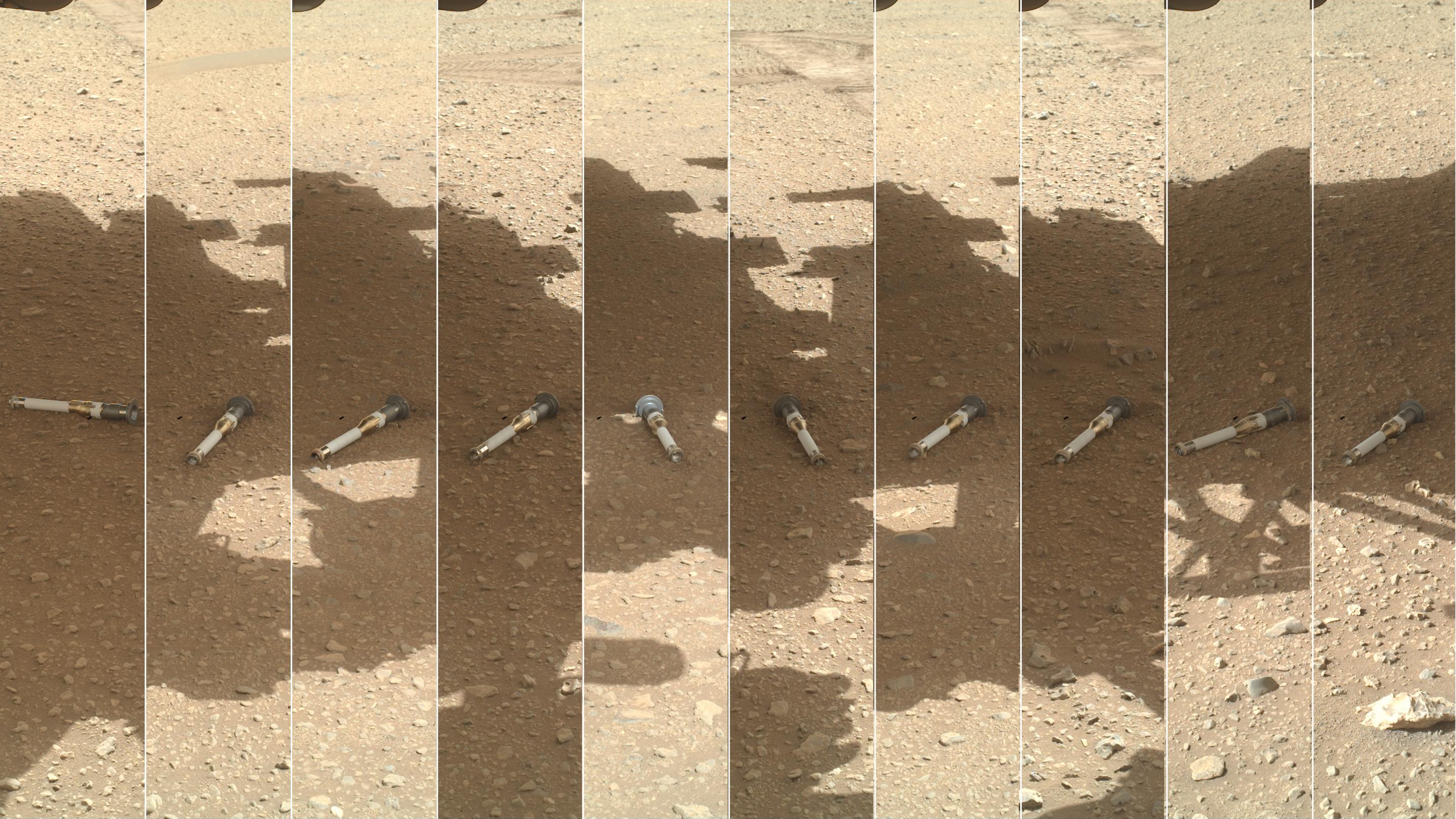
NASA is considering two ways to get its precious Mars samples back to Earth, but the agency won’t pick a winner for another 18 months or so.
Analysis of those samples, which are being collected by NASA’s Perseverance rover, could reveal a wealth of data about Mars and its history — including, perhaps, whether the Red Planet has ever hosted life.
NASA is therefore eager to get the Mars material — about 30 cigar-sized, sealed tubes containing rock cores and sediment — home, and then on to laboratories around the world. But doing so has proven to be more difficult, and far more expensive, than originally envisioned.
Back in July 2020, for example, the maximum total cost of the Mars sample return (MSR) campaign — a collaboration between NASA and the European Space Agency (ESA) — was estimated to be around $3 billion. But just three years later, the expected price tag had risen to $8 billion to $11 billion. And even with that expenditure, the samples likely wouldn’t arrive on Earth before 2040.
Related: NASA wants new ideas for its troubled Mars Sample Return mission
NASA recently deemed this situation unacceptable. In April 2024, agency chief Bill Nelson announced that an overhaul of the MSR strategy is in the works, saying that NASA will seek innovative new ideas from its research centers, private industry and academia.
A few months later, the agency selected 11 MSR proposals from academic and industry groups for further development. Eight of the private groups got up to $1.5 million apiece to keep working on their ideas for the next 90 days.
Such work has led to another milestone, which NASA announced during a press conference this afternoon (Jan. 7): The agency is now focusing on two potential MSR architectures, which differ in the way they would put hardware down on Mars.
The first option would employ a rocket-powered “sky crane,” the system that successfully landed NASA’s Curiosity and Perseverance rovers on Mars in August 2012 and February 2021, respectively. The second would rely on private industry to provide the landing system.
Going with the sky crane would result in an MSR cost of $6.6 billion to $7.7 billion, Nelson said today. The commercial option — which NASA didn’t discuss in detail, citing concerns about proprietary technologies and designs — would be a bit cheaper, at $5.8 billion to $7.1 billion.
“Either of these two options are creating a much more simplified, faster and less expensive version than the original plan,” Nelson said.
He added that, with the newly announced revamp, the samples could land on Earth as early as 2035, provided that Congress allocates sufficient funding. About $300 million would likely be required for MSR research and development this fiscal year and each additional year going forward, Nelson said.
Both options would put the same hardware down on the Martian surface — a lander that sports a small rocket called the Mars Ascent Vehicle (MAV).
The lander will touch down near Perseverance, which will roll over to the newer spacecraft. The lander will then grab the sample tubes using a spare robotic arm developed for Perseverance’s mission, placing them in a canister aboard the MAV. (There’s apparently no room in the new architecture for an Ingenuity-like sample-retrieval helicopter, a possibility in earlier designs.)
The rocket will then launch the samples into Mars orbit, where they’ll meet up with an ESA-provided spacecraft that will haul them back to Earth.
In either case, the MAV and lander will be less massive than originally envisioned, allowing for the possible use of a sky crane. (The baseline MAV/lander concept was too large for a sky crane, necessitating a new and unproven landing system. Even with the new rethink, the sky crane would need to be about 20% bigger than the one that landed Perseverance, agency officials said today.)
The lander will also employ a nuclear power source — a radioisotope thermoelectric generator (RTG), as used by Curiosity and Perseverance — rather than solar panels, as previously planned. The RTG provides two major advantages, according to Jeff Gramling, NASA’s MSR program director.
“One is, it gives us the opportunity to operate during dust storm season. And the surface ops timeline is one of the main drivers here, to make sure we’ve got time to transfer the 30 tubes,” Gramling said during today’s press conference.
“The other is, it helps us make sure we can keep those solid rocket motors on the MAV warm, which is where they like to be,” he added.
Related: Mars dust storm mysteries remain as scientists study the Red Planet
NASA is researching both landing options — the detailed engineering work that would be required for each, for example — and doesn’t expect to make a decision until mid-2026. With that timeline, the European return orbiter could launch no earlier than 2030 and the lander/MAV no earlier than 2031, said Nicky Fox, who heads NASA’s Science Mission Directorate.
Perseverance’s samples may therefore not be the first pristine Mars material to come to Earth. China aims to launch its own sample-return effort in 2028, with could get the samples home as soon as 2031. But that mission will collect material from a single site, whereas Perseverance has been snagging samples from a range of environments, many of which were exposed to liquid water in the ancient past.
China’s planned “grab and go” architecture “does not give you the comprehensive look for the science community,” Nelson said today.
“Will people say that there’s a race?” he added. “Well, of course, people will say that. But it’s two totally different missions.”
Article by:Source mwall@space.com (Mike Wall)






















